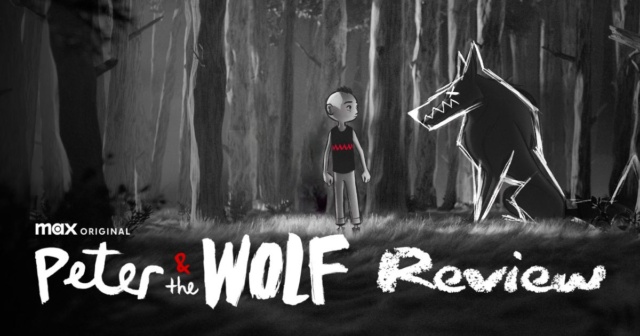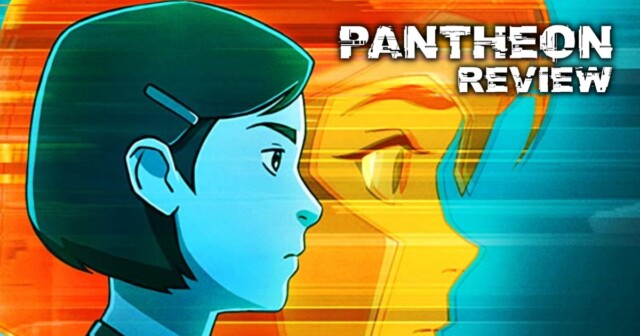Review: Hayao Miyazaki’s ‘The Boy and the Heron’ is a Farewell Poem

Hayao Miyazaki is easily one of the greatest storytellers of our time. The imagination and artistry on display with each project showcases an auteur who dreams of worlds beyond our understanding. Like Spider-Man: Across the Spider-verse, every image of this film can be a poster, keepsake, wallpaper, etc. His latest effort, The Boy and the Heron, continues to demonstrate Miyazaki’s powers. However, this might be one of his most challenging works to date.
The Boy and the Heron is visually inspiring, densely packed with ideas, and remains ambitious in mind-altering wonder. If this is genuinely Miyazaki’s swan song in the industry, he is stretching himself further than most artists could dream. But what might become a debate is whether Miyazaki over-exceeded his grasp, or if the movie itself is too complex (even for this reviewer).
The story centers around Mahito, a young boy who moves in with his stepmother and father at an isolated location. When the film begins, Miyazaki paints the canvas with nightmares of World War II imagery. A town is on fire, with massive oceans of flames engulfing a populated area. We then see Mahito crying out for his mother, as the story implies she died in the chaotic fire. In these first moments, one can feel Miyazaki is aiming for something more personal. Given his long, illustrious life as an artist and his father’s background in WWII, one can feel his childhood influence this story.
Once he makes the move with his father and stepmom, Mahito finds himself in a troubled state of continual melancholy over his mother’s passing. His pain is such that he ends up self-harming after a bullying incident at school. But while recovering, a mysterious gray heron conveys interest in Mahito. When Mahito shows interest in return, the heron begins to communicate with him and summons him to an alleged magical tower that possibly holds an ancestor of Mahito’s; a magical living ancestor who runs an inexplicable world of unimaginable wonders.

The Boy and the Heron features dazzling visuals
The Boy and the Heron keeps the same iconic visual splendor of a Miyazaki movie. Many frames feel like characters are walking in a living and breathing painting. The detail is always striking when watching one of his films, as each sequence is rich with overwhelming detail. His movies always flourish in a backdrop of nature, and the forest and body of water surrounding Mahito feel just as surreal as the story itself. Watching Miyazaki compose a breeze in a secluded home in the middle of nowhere feels musical.
The imaginative ideas behind the creatures are simultaneously bizarre, complex, and yet somehow simplistic in conception. For example, at one point, Mahito encounters the Warawara, a group of playful small spirits that crave resurrection in the real world. Additionally, the alternate world is under threat by fascist Parakeets (you read correctly). With any other storyteller, Parakeets intending to overthrow a democracy may come off as absurd, but Hayao Miyazaki makes it feel like a modern-day allegory.
One of the most abstract works from Hayao Miyazaki
Of all his films, The Boy and the Heron could be the most challenging for the general public. There is a story here, but its presentation is heavily dense. Once we arrive in the alternate world, odd events unfold, revelations occur, and the film has no interest in explaining or sitting in the moment. For example, the movie introduces us to a young girl named Himi inside this wonderland. The character gives a pivotal reveal towards the film’s end, but it’s a “blink, or you will miss it” moment. And like Tenet or Inception, losing any amount of context in a complex film can cause a snowball of frustration.
But similar to a Christopher Nolan experience, The Boy and the Heron might reward with repeat viewings. There is a thematic element here begging to be deciphered and analyzed, especially when considering Miyazaki’s inevitable exit from the industry. He is on the brink of retirement, and this film might be a genius expressing his feelings about leaving the industry in an abstract manner.

Miyazaki reflecting on his legacy
More than anything, The Boy and the Heron feels like a symbolic meditation of Miyazaki’s legacy. He was old enough to experience the finality of World War II. The discussions of his life outline a tension between Miyazaki and his father. And just like in the film, he spent a lot of time in a tower of otherworldly creatures and universes. The Parakeets could even be the threat of it all falling apart at the very end. A man of imagination and wonder being threatened by his creations.
Because of the ambiguity, it leaves room for the audience to decide what Miyazaki is trying to communicate. At the same time, the cryptic nature of this film will not be for everyone. In a sense, this is Miyazaki’s version of Alice in Wonderland, and we, as the audience, are tumbling down the rabbit hole, hoping for straightforward explanations in a world where there are none. It’s a bold choice, but it might alienate some of the younger demographic.
The Boy and the Heron is animated poetry
This film is arguably Hayao Miyazaki’s most complex film and is often difficult to follow because of its cryptic, poetic nature. At the same time, this film is possibly a personal goodbye poem written for those who wish to read it. It’s beautifully written, the prose is engaging, and the words can take numerous meanings.
The story is like if T.S. Elliot crafted an animated goodbye, if Elliot was fond of talking birds and fascist Parakeets. Of Miyazaki’s animated masterpieces, The Boy and the Heron is not among the iconic animated filmmaker’s top-tier. But even a mid-tier Miyazaki movie could be considered an achievement.
The Boy and the Heron is now playing in theaters. Do you plan to watch it? Let us know on social media @mycosmiccircus or The Cosmic Circus Discord.
Peter and the Wolf Review: A Fairytale Worth Watching
Kizazi Moto: Generation Fire Review: Celebration of African Culture





